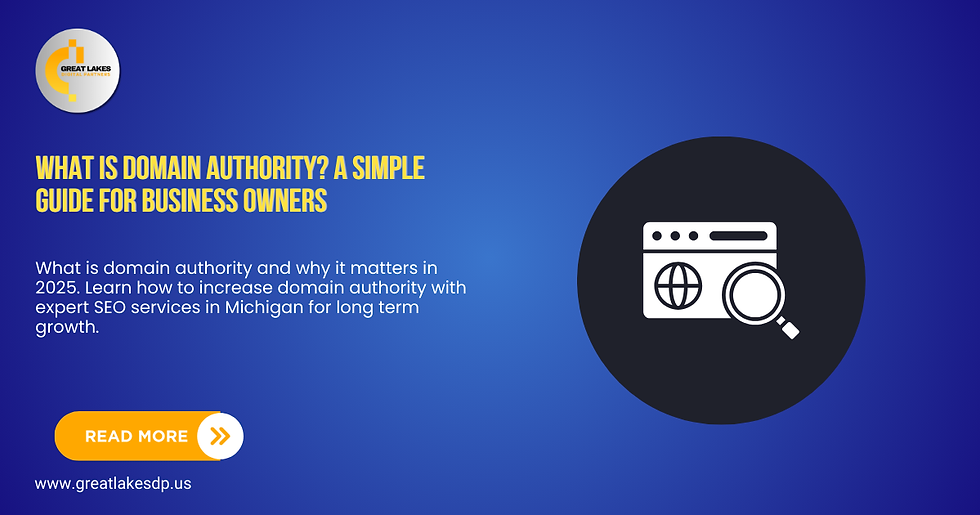AI and Cybersecurity: Protecting Your Web Applications in 2025
- Great Lakes
- Apr 12
- 4 min read

In 2025, the line between innovation and vulnerability is thinner than ever. With businesses rapidly scaling online and threats evolving with equal speed, the synergy between AI and Cybersecurity: Protecting Your Web Applications in 2025 is no longer optional—it’s foundational. As web applications become smarter, so do cybercriminals. So, how do we stay one step ahead?
Let’s explore how artificial intelligence is reshaping the cybersecurity landscape and what proactive strategies developers and businesses must adopt to build resilience.
Why AI is the Future of Cyber Defense
According to IBM’s 2024 report, the average cost of a data breach has reached $4.45 million, a 15% increase over the past three years. Traditional defense mechanisms are proving insufficient, especially with the rise of automated, AI-driven cyberattacks.
AI and Cybersecurity: Protecting Your Web Applications in 2025 hinges on proactive identification, real-time mitigation, and intelligent adaptation. AI doesn’t just respond—it learns, adapts, and acts preemptively.
1. The Rise of AI Threat Detection
AI-powered threat detection tools now analyze millions of data points in real-time, identifying anomalies, unusual access patterns, and zero-day exploits far more efficiently than human teams alone. Companies using AI threat detection have reduced breach response time by 40%, according to Deloitte’s 2024 study.
AI models such as anomaly detection, supervised machine learning, and behavioral analytics are key players in spotting threats before they cause damage. These models continuously evolve based on new patterns and past data, creating a feedback loop that strengthens defenses every hour.
2. Top AI Cybersecurity Tools to Deploy in 2025
Here are a few standout AI cybersecurity tools that you can integrate into your tech stack this year:
Darktrace: Uses self-learning AI to detect threats in real time.
CrowdStrike Falcon: Provides endpoint protection through behavioral pattern analysis.
Vectra AI: Focuses on network detection and response (NDR).
Google Chronicle: Offers high-speed data scanning powered by AI.
ReaQta: Known for automated threat hunting and incident response.
These tools can monitor everything from login behavior to file changes, making them indispensable in the modern cybersecurity playbook.
3. Best Practices: Securing Web Applications with AI
To truly embrace AI and Cybersecurity: Protecting Your Web Applications in 2025, a strategic approach is critical:
Embed AI early in the SDLC (Software Development Life Cycle). Security should be part of development, not an afterthought.
Invest in adaptive firewalls that adjust rules dynamically based on traffic patterns.
Use biometric and AI-enhanced multi-factor authentication (MFA) to reduce identity fraud.
Deploy behavior-based monitoring for session hijacking and data exfiltration prevention.
Run regular AI-based penetration tests to simulate evolving attacks.
These measures go beyond defense—they create an ecosystem where attacks are detected and neutralized in near real-time.
4. Partnering with the Right Development Experts
Not every business has the resources to build a dedicated AI security team. That’s where expert partnerships make all the difference. A reliable AI Development Company in Michigan can help you integrate these advanced tools seamlessly, ensuring your applications stay protected and compliant.
These partners offer AI development services that don’t just include coding but also threat modeling, compliance frameworks (GDPR, HIPAA), and ongoing AI-driven audits.
How to Protect Web Applications with AI in 2025
To protect your web applications in 2025 using AI, integrate real-time threat detection tools, implement adaptive firewalls, enhance login security with biometrics, and conduct AI-powered penetration testing regularly. Partnering with AI experts ensures long-term scalability and security.
The Final Word
AI and Cybersecurity: Protecting Your Web Applications in 2025 is about more than adopting buzzwords—it’s about creating a dynamic, intelligent security framework that evolves with the threat landscape. As AI becomes more embedded in our systems, so must our efforts to harness it for defense. Businesses that embrace this shift today will lead securely tomorrow.
Great Lakes
Want to secure your web applications with cutting-edge AI solutions? Great Lakes, a leading AI Development Company in Michigan, offers tailored AI development services and digital security strategies designed for modern web infrastructures. Whether you need robust threat detection or full-scale application protection, our team can help you build with confidence.
FAQs
1. What types of cyber threats can AI detect in real-time?
AI can identify a wide range of threats including phishing attempts, malware intrusions, zero-day vulnerabilities, unusual user behavior, and API abuse. It scans vast volumes of data to flag even subtle anomalies.
2. How does AI improve the speed of cybersecurity response?
AI automates threat detection and initial response steps. Instead of waiting for human analysis, AI flags, isolates, and can even neutralize threats instantly—dramatically reducing dwell time and potential damage.
3. Is AI-based cybersecurity suitable for small businesses?
Yes, many AI-based tools offer scalable, cloud-based services suitable for SMEs. They reduce the need for large security teams while offering enterprise-grade protection at a lower cost.
4. Can AI completely replace human cybersecurity teams?
No, AI is a powerful support system but not a replacement. Human intelligence is still essential for decision-making, strategy, and ethical oversight in cybersecurity operations.
5. What is the biggest AI cybersecurity trend in 2025?
The biggest trend is predictive threat modeling, where AI anticipates future attacks based on historical data and global threat intelligence. This shifts security from reactive to proactive, offering stronger protection.











Comments